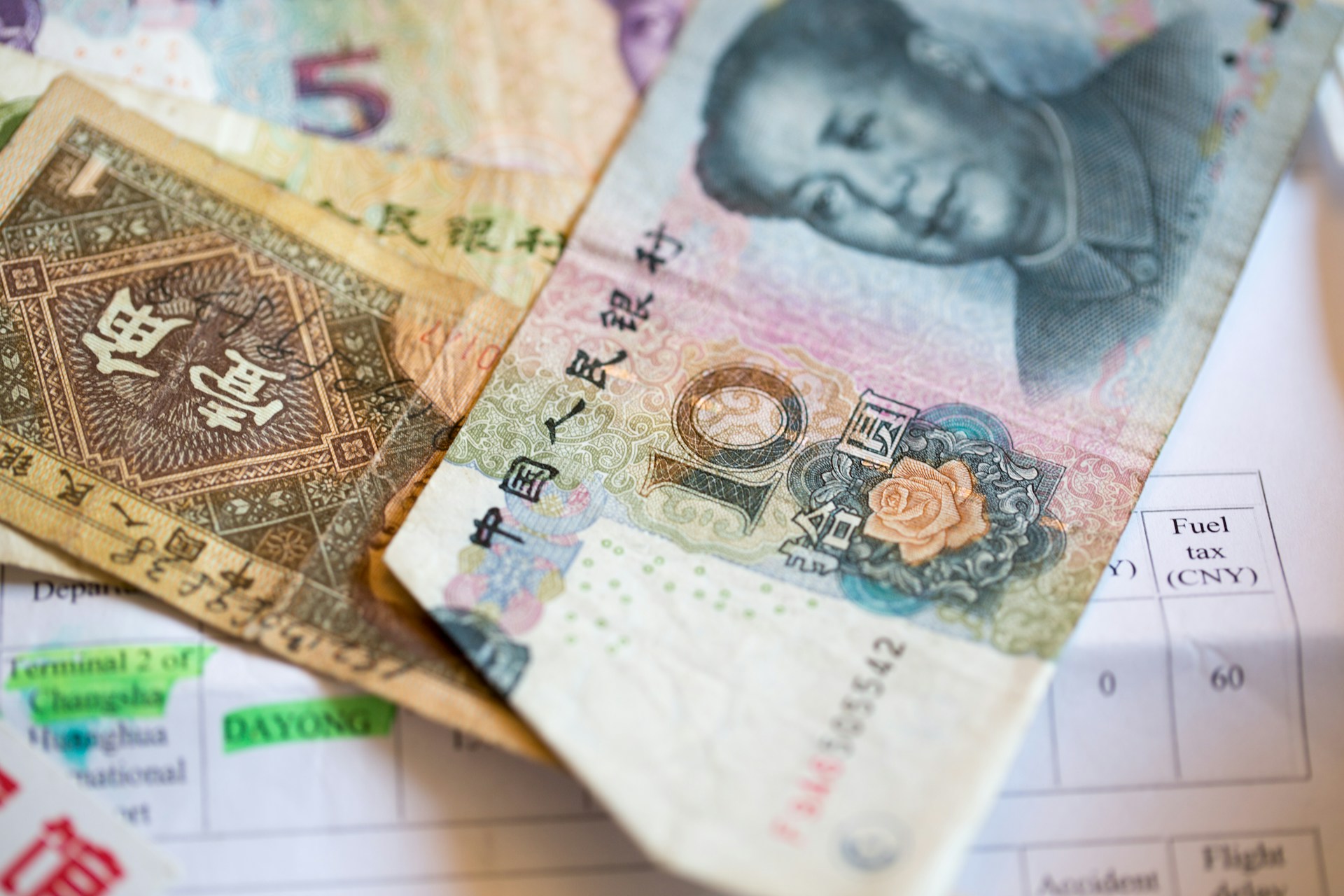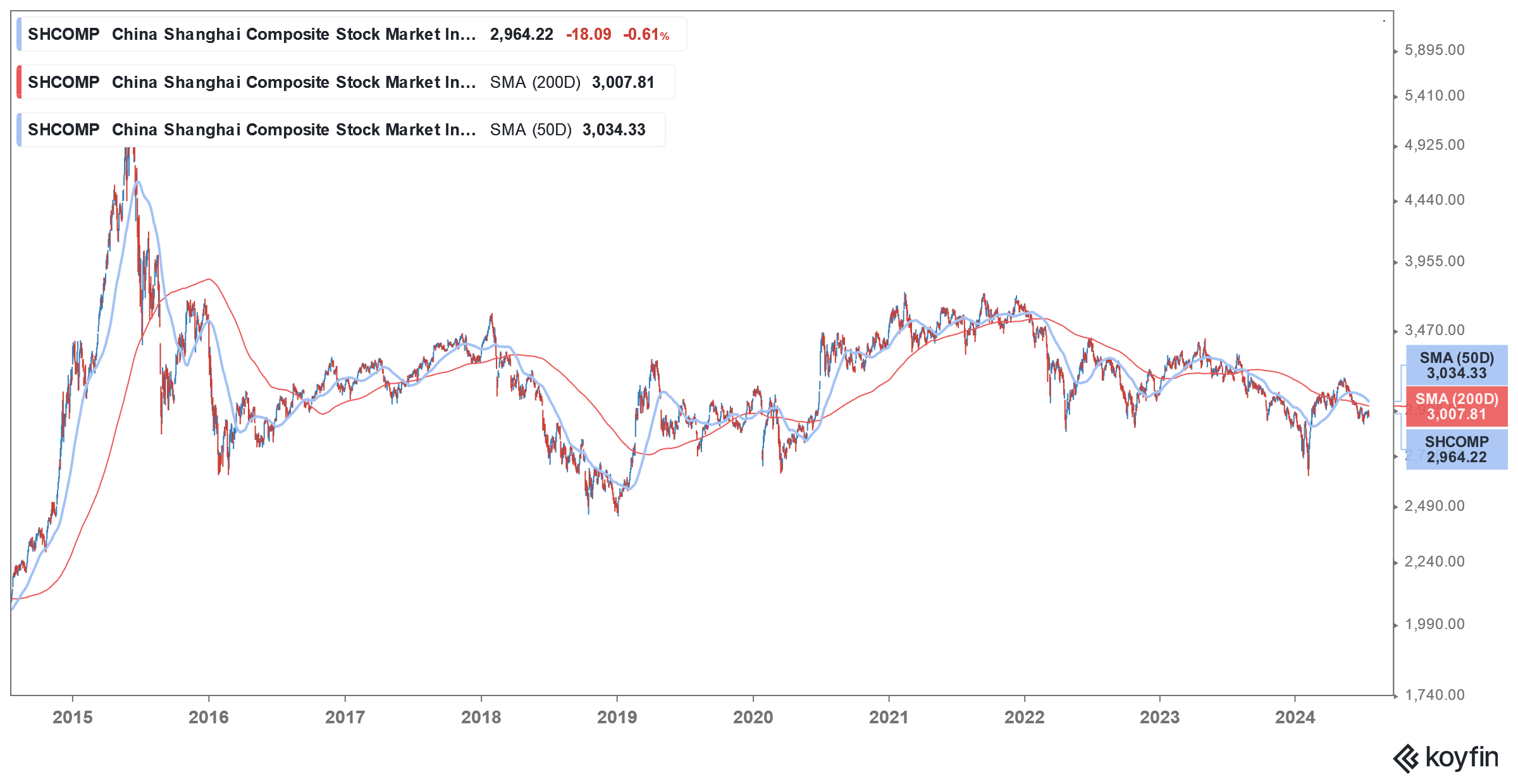
China Slashes Interest Rates and Growth Continues to Sag
- Economy
- July 23, 2024
- No Comment
- 109
Please note that we are not authorised to provide any investment advice. The content on this page is for information purposes only.
China has slashed key interest rates in a bid to revive growth in the world’s second-biggest economy. This is the first rate cut by the Chinese central bank in almost a year and comes days after the country’s twice-a-decade plenum concluded.
Earlier today, the People’s Bank of China (PBOC) said that it would cut the seven-day reverse repo rate by 10 basis points to 1.7%, and would also enhance the open market operation mechanism. Soon after that announcement, China’s central bank lowered the benchmark lending rates by 10 basis points.
China Cuts Key Interest Rates
After the changes, the one-year loan prime rate (LPR) stands at 3.35% while the five-year rate is at 3.85%. China also lowered the rates on its standing lending facility (SLF) by 10 basis points. The SLF is a kind of loan that the PBOC provides commercial banks to fulfill their short-term cash demands.
In its note, the PBOC said, the rate cuts are meant to “strengthening counter-cyclical adjustments to better support the real economy.”
Meanwhile, the rate cut announcement came as a surprise to markets.
According to Larry Hu, chief China economist at Macquarie, “The cut today is an unexpected move, likely due to the sharp slowdown in growth momentum in the second quarter as well as the call for ‘achieving this year’s growth target’ by the third plenum.”
Zhang Zhiwei, president and chief economist at Pinpoint Asset Management said, “The fact that PBOC didn’t wait for the Fed to cut first indicates that the government recognizes the downward pressure on China’s economy.” Zhiwei expects more rate cuts from the PBOC as the Fed starts cutting rates.
Traders Expect Fed to Cut Rates in September
Over the last month, Federal Reserve chair Jerome Powell has made some very dovish comments. Last week, speaking with David Rubenstein, chairman of the Economic Club of Washington, D.C., and co-founder of The Carlyle Group, Powell said that the Fed won’t wait for inflation to drop to 2% before it starts cutting rates.
The odds of a Fed rate cut by September rose to 100% and rising optimism over lower rates is also helping support the rally in US stocks.
China Reported Dismal Q2 GDP Data
Data released earlier this month showed that China’s GDP rose at an annualized rate of 4.7% in Q2 which was below estimates. The country is facing some serious structural issues like a property downturn (which is also taking a toll on the banking sector), high national debt government debts, and weak private-sector spending.
China tried steering away its economy from an export and investment-led economy to a domestic consumption-driven economy. However, the country’s consumption growth has sagged and according to Rhodium Group, the share of household consumption in China’s total GDP has fallen to 39%.
The ratio is not only much lower than the OECD countries but also what it used to be a decade back. In its note, Rhodium Group said, “In the absence of significant fiscal reforms, long-term household consumption growth is likely to slow to around 3-4% per year in real terms over the next five to ten years. At most, household consumption will contribute around 1.5 percentage points of GDP growth per year, which is likely to limit overall long-term GDP growth to around 3%, given the known headwinds to faster investment growth.”
Communist Party Plenum Disappointed Markets
Meanwhile, China’s recently concluded Plenum largely disappointed markets. While the communique said that the country will “strive to expand domestic demand” it listed no concrete plans including on how it plans to cut the overreliance on exports and investments.
The communique added, that the county needs to “move faster to foster new drivers of foreign trade.”
Notably, China is facing pushback from its trading partners over the spiraling trade deficit in China’s favor. China’s trade surplus ballooned to a record high of $823 billion last year. Former US President Donald Trump has vowed to increase tariffs on Chinese goods further if he is voted back to power in the 2024 elections.


Analysts Are Cautiously Optimistic on China Stocks
Chinese stocks have underperformed global markets over the last decade and the Hang Seng index fell to multi-year lows earlier this year.
To be sure, the valuations of Chinese markets have plummeted over the last few years. Firstly, China’s tech crackdown spooked investors and many US fund managers now find Chinese stocks “uninvestable” Cathie Wood of ARK Invest is among those who sold off Chinese stocks in 2021 amid the tech crackdown.
While the country has since sounded a more reconciliatory tone towards large tech companies, for many investors Chinese tech stocks are now uninvestable considering the policy uncertainty. Rising tensions between the US and China are not helping matters either.
However, some analysts see value in Chinese stocks despite the challenges owing to their tepid valuations.
In June, JPMorgan issued a bullish note on Chinese tech stocks and said it sees a 20%-25% upside in the sector. Goldman Sachs and BNP Paribas are also bullish on China stocks despite the headwinds.
Meanwhile, it remains to be seen whether the rate cuts by China’s central bank propel growth as the country’s consumers have held back purchases amid uncertainty over the economy.
#China #Slashes #Interest #Rates #Growth #Continues #Sag









